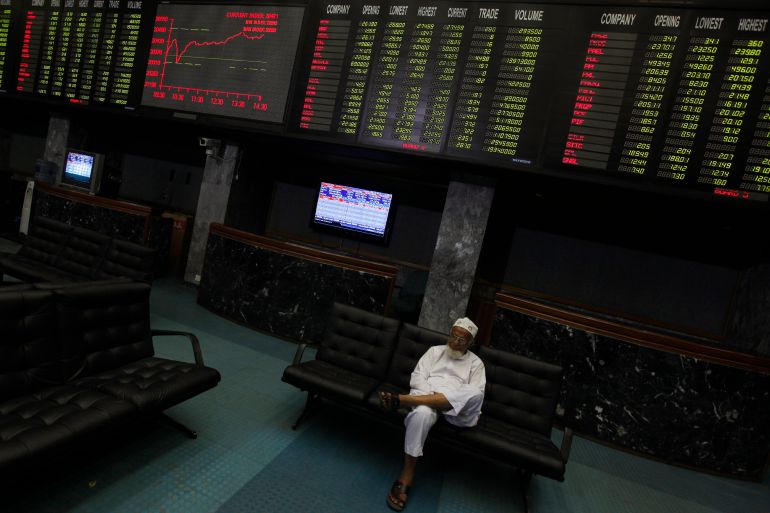Pakistan foreign exchange reserves drop to lowest since 2014
Experts paint a gloomy picture, saying the government must reconsider its priorities from finding short-term solutions to more sustainable reforms.

Islamabad, Pakistan – Pakistan’s foreign exchange reserves have fallen to $4.3bn, its lowest levels since February 2014, the country’s central bank announced after paying off some of Pakistan’s external debt payments.
The State Bank of Pakistan (SBP) released on Thursday revealed the figure, adding that commercial banks have $5.8bn, totalling nearly $10.1bn.
Keep reading
list of 3 itemsPakistan’s finance minister to meet IMF delegation in Geneva
Donors pledge more than $9bn for Pakistan flood recovery
Pakistan is hoping to end the deadlock as the International Monetary Fund (IMF) is expected to release a $1.1bn loan, which is part of the $7bn loan programme the country entered in 2019. It is also seeking immediate financial assistance from its close bilateral partners amid the economic crisis.
Thursday’s announcement comes at the back of Prime Minister Shehbaz Sharif’s visit to the United Arab Emirates where it was disclosed that the Gulf state pledged to roll over $2bn of existing loans while providing an additional loan of $1bn.
Total liquid foreign #reserves held by the country stood at US$ 10.19 billion as of January 06, 2023.
For details https://t.co/WpSgomnKT3 pic.twitter.com/l9Syz9T1bh— SBP (@StateBank_Pak) January 12, 2023
In August last year, the IMF released a tranche of $1.17bn, but the next round of funding has been in the doldrums as Pakistan has so far not agreed to the lender’s various conditions such as increasing energy prices and expanding the tax base.
Pakistan also suffered from catastrophic floods last year which resulted in the death of more than 1,700 people, affected 33 million people, and caused a loss of more than $30bn to the country.
Earlier this week, Pakistan hosted an international donors’ conference in Geneva with the United Nations, in which the global community pledged more than $10bn over the next three years.
Experts, however, have painted a gloomy picture saying the government must reconsider its priorities from finding short-term solutions to more sustainable reforms.
Sakib Sherani, an Islamabad-based economist, said Pakistan has more than $20bn debt repayment obligation annually for the next two years.
“Our annual debt repayment in 2017 was close to $7bn. This year and the next, we are looking at over $20bn. We cannot help but continue borrowing and while it may be a short- to medium-term solution, it is just unsustainable,” Sherani told Al Jazeera.
He said Pakistan must restructure its debt repayments and the government should draw a clearer roadmap for its economic strategy.
“What appears to me is that they are looking at this economic problem from a political lens, and they are trying not to get the country out of default but just to defer this situation till June or July this year, after which they can handover to caretaker government to take harsh decisions,” he added.
Pakistan is scheduled to go to the polls later this year. The current parliament finishes its tenure in August before an interim set-up takes over for three months.
Sajid Amin, a senior official at the Sustainable Development Policy Institute, a research institute in Islamabad, said getting short-term refinancing and rollovers from friendly countries is not a sustainable solution to the country’s economic woes.
“We are in a stressful situation where every dollar counts. While these rollover announcements provide some temporary relief, we have no choice but to consider long-term planning on restructuring our overall debt obligations,” he told Al Jazeera.
Due to the country’s precarious economic situation, the World Bank also revised its growth projection downwards from 4 percent in June last year to 2 percent for the current fiscal year in its latest global economic prospects report.
“Pakistan faces challenging economic conditions, including the repercussions of the recent flooding and continued policy and political uncertainty. As the country implements policy measures to stabilize macroeconomic conditions, inflationary pressures dissipate, and rebuilding begins following the floods, growth is expected to pick up to 3.2 percent in FY2023/24, still below previous projections,” the bank’s report said.